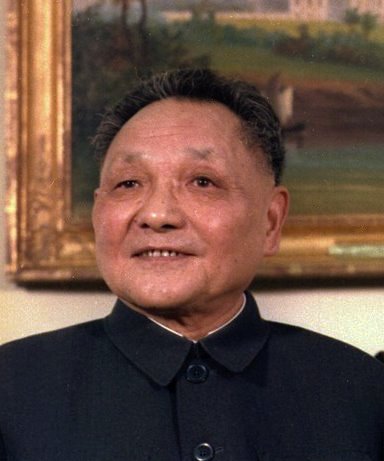In the recent past, there has been a lot of talk around the government providing a universal basic income(UBI) to every Indian. If UBI becomes the order of the day, then the central government will carry out an unconditional income transfer to every Indian, rich or poor, on a periodic basis (perhaps monthly).
The question is can we afford it? The answer seems to be no. This becomes clear from a remark made by the NITI Aayog Vice Chairman Arvind Panagariya, in a recent interview to The Indian Express: “The Tendulkar urban poverty line at 2011-12 prices is Rs 1,000 per person per month. Due to inflation between 2011-12 and now, at today’s prices, this sum would be significantly larger. But transferring even Rs 1,000 per month to all Indians would cost Rs 15.6 lakh crore (Rs 1,000 x 12 months x 130 crore people) a year. We simply do not have this magnitude of fiscal resources.”
The total expenditure of the Indian government during 2016-2017 has been projected to be at Rs 19.78 lakh crore. Rs 15.6 lakh crore amounts to around 79 per cent of the total expenditure of the Indian government. This makes it unviable. Or so it seems.
The question that crops up here is that why are economists who are recommending UBI, actually recommending it? It doesn’t take much Maths to understand that India cannot afford a universal basic income at this point of time.
The economist Pranab Bardhan in a 2011 article in the Economic & Political Weekly, said: “The main question is: if we want it to be universal, can we afford it? Of course the answer depends on the amount to be given out, if it will be a replacement for the existing transfer programmes which have a lot of wastage and misappropriation.”
The point being that many of the current subsidy programmes run by the government are excessively leaky. Given this, the subsidies don’t reach those that they are meant for. This includes subsidies on rice, wheat, kerosene, sugar, fertilizer etc. In this scenario, it perhaps makes more sense to shutdown these subsidies and handout cash directly to every citizen, who can then spend it the way he or she deems it to be fit.
The economist Vijay Joshi gets into the actual nitty-gritty of UBI in his book India’s Long Road—The Search for Prosperity. He talks about multiple things that will help government raise revenue as well as cut down on expenditure, and in the process, make way for UBI. Let’s look at his suggestions.
Joshi talks about a courageous government taxing agricultural incomes and in the process managing to raise 0.5 per cent of the GDP as annual revenue. He also talks about privatising public sector enterprises leading to efficiency grains and helping raise resources of 1 per cent of GDP annually, for the next decade. Over and above this, there are many counterproductive tax exemptions that have been given over the years. Joshi hopes that doing away with these exemptions would help raise revenues by around 1.5 per cent of the GDP per year.
Joshi then recommends the winding up of non-merit subsidies and food subsidies. In total, this would free up resources of at least 10 of the GDP and perhaps up to 12 per cent of the GDP. All this would make UBI viable, feels Joshi.
As he writes: “The most serious non-fiscal problem with transfer schemes is the identification of beneficiaries… Therefore, in my judgement, a universal cash transfer would be the best route to follow. I would therefore recommend the adoption of the scheme… which involves disbursing a ‘basic income’ of Rs 17,500 per household per year, into the bank accounts of all households.”
Transferring money to every household of this country would essentially ensure that the government does not have to figure out who is eligible for the transfer and who is not, a major problem with paying out almost all subsidies.
Assuming five people per household and a population of 130 crore we come up with 26 crore households. Hence, the total bill for universal basic income would work out to around Rs 4.55 lakh crore, at Rs 17,500 per household per year. If the government is able to eliminate other subsidies and at the same time raise revenues through measures like taxing agriculture, then the UBI is very workable.
And given that many existing subsidies are terribly leaky, transferring money directly to citizens and letting them decide what to do with, makes more sense. There is enough research evidence to show that when people(especially women) are given money they tend to use it wisely and don’t blow it away on alcohol and tobacco. Also, over a period of time, the overall UBI bill can be brought down by allowing people who do not want a basic income to opt out of it.
The trouble is all this is dependent on the fact whether the government is able to eliminate many subsidies that it currently offers including food subsidies. And that is easier said than done. For an economist, making a calculation, it is easy to assume, remove this subsidy, increase that revenue, and everything falls into place. For a politician, it isn’t. And that is where the whole thing starts to unravel.
Let’s take consider some of Joshi’s recommendations. Take the case of taxing agricultural income. On the face of it, this makes tremendous sense. Nevertheless, which politician would have the balls, to venture into this territory.
Or take the case of selling off public sector enterprises, lock, stock and barrel. No government till date has shown even a remote inclination to do something like that. Or doing away with tax exemptions that favours corporates. While politicians talk about it all the time, nothing seems to happen.
The joker in the pack is doing away with food subsidies. Currently, the government sells rice and wheat at subsidised prices through the fair price shops that make up for the public distribution system all over the country. The government acquires rice and wheat from farmers and then distributes it through the public distribution system. If food subsidies are done away with, this procurement would not be required.
Hence, in an ideal world, a successful universal basic income programme would mean the end of the procurement, transportation and distribution of subsidised rice and wheat. This would mean that the government would have to stop acquiring the massive amount of rice and wheat that it does from farmers directly through the Food Corporation of India and other state procurement agencies.
This is something that hasn’t been discussed at all by the economists recommending the universal basic income. Would politicians be ready for something like this? What would be the impact on food inflation? Does the open market for rice and wheat work well enough? What would happen to the five lakh fair price shops across the length and the breadth of the country? Would the government shut down the Food Corporation of India, or would it scale down its operations?
These are questions which no one would like to get into. In this scenario, my guess is that if universal basic income is introduced in the near future, it will be over and above the government subsidies already in place. And that can’t possibly be a good thing. It is something that the country cannot afford.
The column originally appeared in Equitymaster on January 27,2017


